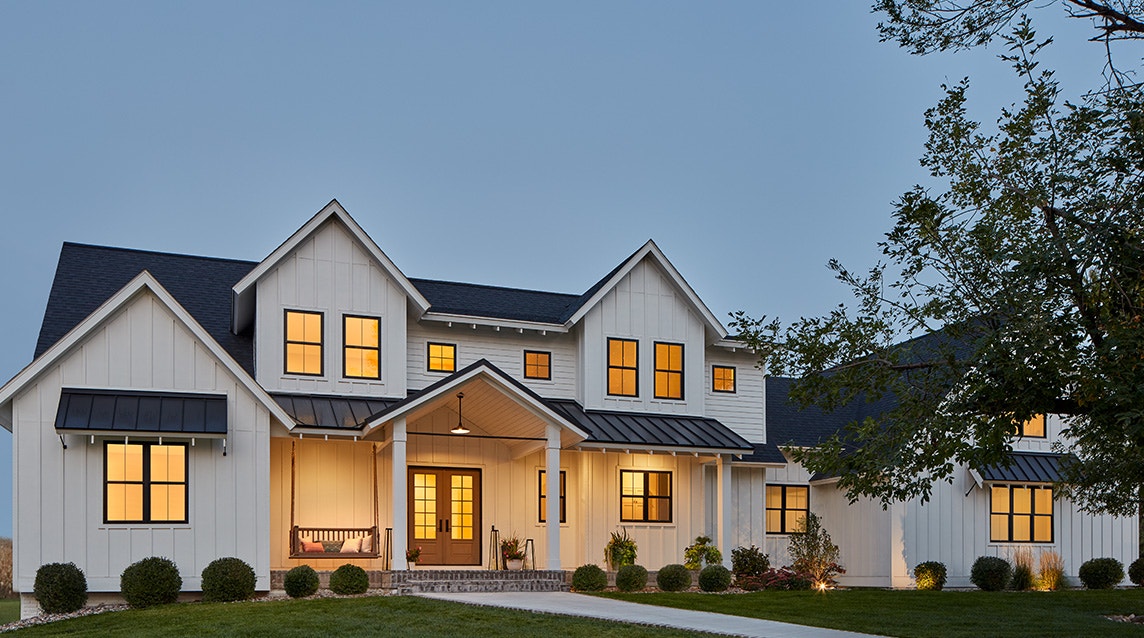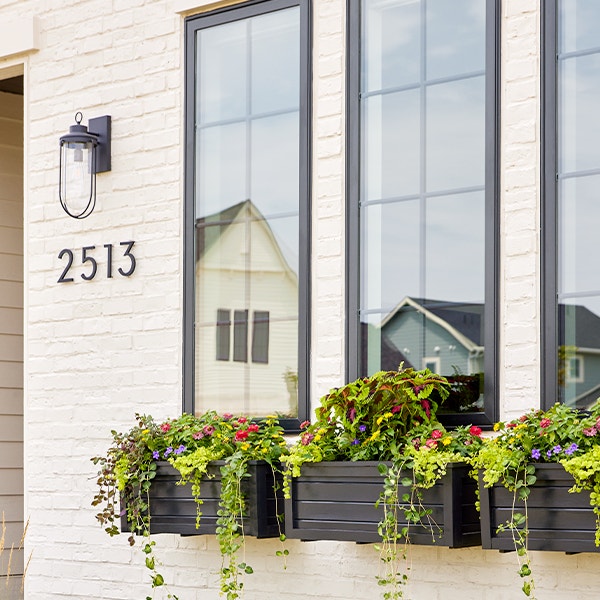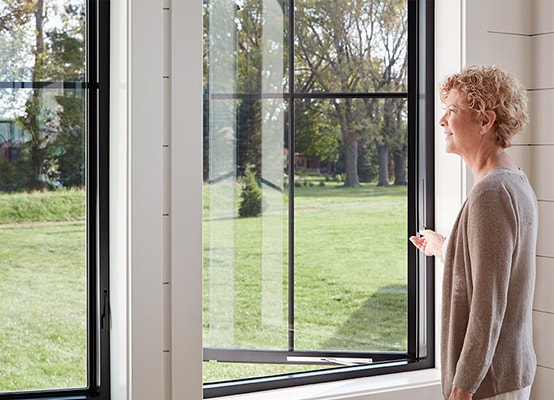The Pros and Cons of Fiberglass Windows
Explore the pros and cons of fiberglass windows, comparing how the material stacks up against vinyl and wood.

Published 2020-03-10

Choosing the right material for your windows is a crucial decision, and fiberglass often emerges as the middle ground between wood and vinyl. As we delve into the fiberglass material below, you’ll see it brings a set of advantages and some drawbacks to consider.
Advantages of Fiberglass Windows
Fiberglass is a versatile material that’s used in many applications beyond window frames. You’ll find it in everything from boats and airplanes to the insulation in your own home. With so many everyday uses, let’s talk about the many benefits provided by fiberglass material.
1. Fiberglass is strong and durable.
Like its name describes, fiberglass is made of glass fibers. As a composite material, it is commonly made with randomly blown glass rovings. That’s not the case with Pella’s proprietary fiberglass. Through a one-of-a-kind manufacturing process, our fiberglass starts with our structural mat which places rovings in a specific, intricate order. After layered with more strategically placed rovings, the materials are pulled through a machine, injected with polymer resin and heated. It creates an entirely new, thermoset material which won't break down when exposed to the elements or lose its shape in extreme heat. The result is a material that is much stronger than vinyl and wood.9 Pella's fiberglass further enhances durability, making it resistant to denting, warping and corrosion. Compared to the competition, Pella’s fiberglass is the strongest material for windows and patio doors.9 This strength means fiberglass windows can have thin profiles with large glass sizes to create eye-catching walls of glass.

2. Fiberglass windows are energy efficient.
Engineered to withstand extreme temperatures, fiberglass windows have stable and rigid frames that resist expansion or contraction with changing weather. Fiberglass is one of the best insulating materials, minimizing heat and cold transfer. The material's insulating properties, combined with dual- or triple-pane glass, impact glass and optional foam insulation, make fiberglass windows very energy efficient. They’re tested from -40°F to 160°F, so our fiberglass windows will keep your home comfortable no matter the weather outside. Plus, Pella® Impervia® fiberglass windows resist air and water infiltration. This means the windows are sealed from the elements, preventing leaks and drafts.

3. Fiberglass frames are low maintenance.
Fiberglass frames do not bend or dent, offering resistance to damage during construction or adverse weather conditions. With a durable powder-coat factory finish, Pella fiberglass windows resist chipping, chalking and fading so you never need to paint or refinish the frames. These windows are naturally resistant to water and bugs, meaning they’ll never rot or corrode. Put simply, Pella’s fiberglass windows are designed to stand up to extreme elements.
Disadvantages of Fiberglass Windows
Despite all its benefits, fiberglass isn’t perfect for every project. There are a couple drawbacks to choosing fiberglass windows:
1. Fiberglass windows cost more than vinyl windows.
On average, fiberglass windows come at a higher cost compared to vinyl. While this may impact the budget, the savings on maintenance, repairs and energy often outweigh the upfront expenses, making fiberglass more affordable than you might think. If you’re willing to pay a bit more than vinyl, fiberglass offers high-performing, long-lasting window options.

2. Fiberglass offers fewer design options than wood.
Fiberglass windows have fewer color options than wood. If you’re looking for an exact color match to your home’s design, wood offers more standard features and options, including unfinished wood. This allows for ultimate customizability as it can be painted any color on the jobsite, unlike fiberglass. Fiberglass comes in a range of solid-color and dual-color frame options to complement your home’s color scheme. That includes black windows, a rising trend that is modern yet classic. You can go with white on the interior and black on the exterior or get black window frames inside and out.
Fiberglass frames are sleek and slim, offering timeless style. If you’re looking for a historically accurate design, wood is a better option as traditional, ornate profiles are available. Fiberglass is a great choice for those who like the look of thin sightlines, modern style and innovative hardware. Available with the Easy-Slide Operator hardware, fiberglass casement and awning windows provide a sleek look and an innovative way to open and close your windows. With the same simple motion as dimming the lights with a dimmer switch, the Easy-Slide Operator allows you to simply slide to open and close, without the effort of cranking. Depending on the color and style you’re looking for, fiberglass offers more design versatility than vinyl, but less than wood.
Comparing Fiberglass, Vinyl and Wood Windows
While fiberglass may have a higher upfront cost than vinyl, its benefits in terms of strength, durability, energy efficiency and maintenance place it on par with or above other materials like wood. When considering the overall aesthetic and replacement cost, fiberglass strikes a balance between wood and vinyl, providing a versatile and reliable option for homeowners.
While you can’t go wrong with the quality craftsmanship of any of our window materials, fiberglass might just provide the right blend of benefits at the right price point for you.
Schedule a free consultation to find windows and doors for your home.

